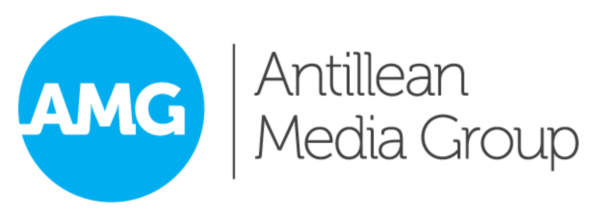DESPITE the price of oil falling from a high of US$107 per barrel in the middle of 2014 to just over US$50 in late January 2015, this has so far failed to reduce the cost of air travel with the airlines that operate the North American and European routes that bring millions of visitors to the region each year.
In contrast, a growing number of airlines flying in the Asia-Pacific region have begun to gradually reduce or remove their fuel surcharges.
Either for commercial reasons or under pressure from regulators, Virgin Australia, AirAsia, Quantas, Japan Airlines and Air China have in recent weeks begun to act; albeit in some cases with little benefit to the traveller, as in parallel they have sought to increase their base fares to maintain profit margins.
Irrespective, it is an example that most of their US or European counterparts have failed to follow.
Despite the urging of the media, public opinion and an increasing number of politicians on both sides of the Atlantic, airlines like British Airways, United and other major transatlantic carriers have decided not to pass on the savings they are making to consumers.
The fuel surcharge was first introduced in the early 2000s in a very public way to try to demonstrate to travellers that it was not the airlines’ fault that ticket prices were rising. However, now that the price of oil has fallen dramatically the airlines are arguing, as Delta has done, that they need the additional revenue to reduce their indebtedness and give higher dividends to stockholders.
Although the International Air Transport Association (IATA), a UN agency, forecast at the end of October that such charges should begin falling as the drop in the price of oil worked its way through the aviation fuel system, this now seems far from certain.
Prices for aviation fuel lag behind the price of oil by about a month, but airlines hedge their fuel costs by buying many months forwards, making rapid change less likely. However, higher priced hedges are now much less relevant as airlines are buying forward at significantly lower prices, and other factors are now coming into play.
This is because over the years, fuel costs, the biggest variable element in all airlines operating costs, and a critical element in every carrier’s profitability, have also come to involve marketing and many other commercial considerations.
This has resulted in big variations in how the levy is considered by different airlines, with the surcharge varying by class of travel, currency fluctuations, and the level of competition on specific routes. It also involves complex calculations relating to the charging structure across all of the routes any airline will fly, the pricing differentials in relation to refining charges where fuel is taken onboard, and the average mix of the different fares on each flight. As a consequence, it is a topic few airlines wish to discuss in any detail as it goes to their heart of their commercial strategy.
Missing the boat on high demand
The fall in aviation fuel prices is occurring just as demand for travel in North America and to a lesser extent from Europe is growing significantly. The consequence has been that North American and European aviation has gone from being an industry struggling to make profits to one that is now performing well as the international stock markets have recognised.
According to IATA, in 2014 airlines globally saw the amount they paid for fuel fall by US$99 billion, with jet fuel now around 47 per cent cheaper than it was a year ago. Notwithstanding, reports in the US media suggest that a US$858 round trip coach fare between London and New York remains unchanged; consisting of a US$403 base airfare plus US$458 of carrier imposed charges; predominantly the fuel surcharge.
At the same time, industry studies show that that aviation fuel costs in the Caribbean are on average 14 per cent more than in the rest of the world and that some parts of the region additionally impose import taxes on aviation fuel.
There also continue to be a long list of Government imposed travel related taxes on security, departures, airport redevelopment and even arrivals, to say nothing of navigation and other fees, all of which are pushing prices higher.
Impacts for Caribbean markets
Speaking last October about the economic effect of this, Peter Cerda, IATA’s Regional Vice President for the Americas, told the Caribbean Tourism Organisation’s State of the Industry Conference that aviation taxes continued to increase the cost of travelling to the Caribbean and made the region less competitive. “Taking the islands as a whole”, he said, “each dollar of ticket tax could lead to over 40,000 fewer foreign passengers, resulting in US$20 million less in tourist spending and 1,200 fewer jobs”. “Caribbean countries must therefore consider the aviation industry as a key element for tourism development,” he suggested.
For the long-suffering Caribbean tourism sector, this is news it could do without. Although Caribbean Airlines (CAL) and LIAT have announced changes to their fuel surcharges on regional basis, and in the case of CAL also on its North American routes, it is the US and European carriers that bring the greatest number of visitors to the region.
Put another way, while the decline in oil prices may be good news for the airline industry and its profitability; for travellers to and from the Caribbean the only short term hope is if low cost airlines see competitive advantage in passing some of their savings on across a season, causing the legacy carriers for commercial reasons to feel they have no option but to respond.
Hard pressed-travellers to the Caribbean and the industry in the region should not therefore expect any rapid decline in the fuel surcharges, which to date for airlines to have become a one way bet in their favour. Nor should anyone expect any decline in requests to Government for marketing and others forms of support from airlines to introduce or maintain services to Caribbean destinations, or a reduction in the taxes that Governments levy on travel.
Sadly, it seems that the cost flying to the Caribbean is set to remain high.


